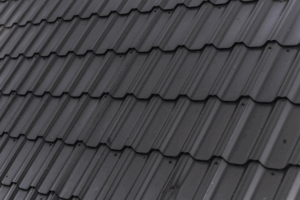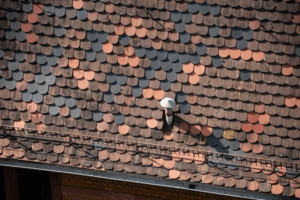Smart roofing automation redefined what it meant to be a roofer in 2025. Technology changed how roofing company owners operate and grow their services. As industry landscapes evolve over time, your customers’ demands are also changing. More and more roofing giants are embracing the latest technology to stay ahead. Autonomous robots will soon launch in Pennsylvania and New Jersey to respond to the worker shortage problem in the roofing industry.
If we learn something from 2025 trends is that smart roofing has made many resource-heavy and risk-prone tasks obsolete. We have AI and IoT dreams taking roof measurements. Cloud computing is making your roofing crew’s life easier. These innovations enable you to make better decisions and scale your business the right away. You should be ready to embrace this revolution.
Use ProLone CRM for automated lead generation and customer engagement. Claim a phone number to make calls and send texts from inside your CRM. Customize invoice templates for your team. Get more online reviews from happy customers with automatic text message and email requests..
Why the Need for Smart Roofing Automation?
Risking Market Pressures
Some of the top 2025 trends in the roofing industry show that company owners are facing intense pressure. This pressure necessitates embracing roofing automation. As more roofing contractors are vying for roofing projects, the demand for faster and more accurate project delivery intensifies. Customers don’t tolerate delays or misinformation. Instead, they want on-time services and honest communication. If you fail to offer faster turnaround, your clients will switch to your competitors.
Also, many roofing businesses face a lack of skilled workers. Automation helps them stay productive by not depending too much on manual labor for time-consuming tasks. As modern consumers ask for rapid, 24-hour responses, relying solely on manual labor isn’t a sustainable solution. Automation offers the technology backbone you need to meet these expectations (efficiently & transparently).
Industry Challenges
Manual or paper-based roofing processes are simply not viable these days. The modern roofing ecosystem is competitive. Roofing companies that rely solely on manual workflows face several obstacles, like:
- Time-Taking Processes: Entering data manually and scheduling crews the traditional way can be time-consuming. You can better spend this time doing something productive.
- Human Errors: Human errors can happen when taking roof measurements. Billing errors alone lead to millions in lost profits in the roofing industry.
- Workflow Inefficiencies: If you don’t have automated coordination in your company, your roofing projects will suffer from delays. You will utilize your resources poorly. Also, you will face communication breakdowns.
- Technological Lag: Companies that cling to outdated technologies face scalability issues and struggle to keep pace with digitally savvy competitors.
The Competitive Edge
Many companies adopt smart roofing tools to gain a competitive advantage over their competitors. They become better at all the steps. From capturing leads to completing a project, they deliver an excellent customer experience. Automation cuts needless labor costs. No more travel expenses that run amok. You can control your administrative costs and improve your profit margins.
6 Key Technologies Defining Roofing in 2026
- Drone Inspections
Let’s start with the most glaring example that we’ve previously mentioned multiple times in our blogs. Drone inspections are one of the most important 2025 trends in the roofing industry. In fact, roofing automation has also become synonymous with this technology. Here’s how it works.
AI-powered drones capture high-res aerial images. They combine them with thermal imaging to detect problems like moisture accumulation & structural damage. Small cracks that are invisible to the naked eye become apparent with these drone-assisted pictures. So, these drones save your time by completing roof inspections & measurements in minutes. Not hours or days! Moreover:
- You don’t need your technicians to physically go up dangerous roof surfaces. You will get rid of this risk altogether.
- AI algorithms trained on extensive roof condition data will automatically identify & classify different roof-related problems accurately.
- You get faster delivery of detailed post-inspection reports with 3D roof models. Annotated damage zones will help you with transparent client communication.
- Predictive Maintenance
These tools combine IoT sensor technology with predictive analytics. So, your company can now remotely monitor the health conditions of the roofs that you’ve installed. These sensors go on top of a roof and track different parameters: moisture levels, temperature changes, etc. These tools:
- Early detection of wear and tear allows for proactive maintenance
- Data-driven maintenance schedules extend roof lifespan and reduce emergency call-outs
- Building owners receive dashboards with actionable insights
- Predictive models use historical and environmental data to optimize resource allocation
- Cloud-Based Project Management
Cloud platforms are now the backbone of roofing operations nationwide. They become a bridge that connects your multiple offices and field teams. These project management tools provide:
- Centralized scheduling, budgeting, resource allocation, and document management
- Automated task assignments and workflow notifications
- Project managers monitor timelines, budgets, and progress in real time
- Better coordination of multiple simultaneous projects without operational chaos
- AI-Enabled Sales & Customer Engagement
If you want more roofing jobs coming your way, get a roofing CRM. But keep in mind that roofing CRMs are available in different types. AI is transforming sales workflows & customer interactions in roofing businesses. Choosing the right CRM type (such as ProLine) provides these benefits:
- Automated lead qualification prioritizes prospects likely to convert
- Chatbots provide instant responses to inquiries around the clock
- Personalized outreach nurtures leads through targeted emails and SMS
- AI analytics identify upsell opportunities, increasing average contract values
- Post-sale engagement automates maintenance reminders and satisfaction surveys
- Workforce and Jobsite Automation
Many roofers in the US are using workforce management tools. These tools come as mobile apps and offer GPS tracking. That’s how you can automate daily workforce management, along with:
- Real-time logging of work hours, task completion, and safety compliance by crews
- GPS-enabled dispatch optimizes crew routes and minimizes idle time
- Automated incident reporting highlights safety or quality issues rapidly
- Provides supervisors with performance dashboards for targeted training
- Data Analytics Automation
Lastly, you shouldn’t ignore the financial aspect of automation in roofing. These tools offer:
- Integrated invoicing and payment tracking improve cash flow and reduce billing errors
- Expense monitoring with budgetary alerts prevents cost overruns
- Financial dashboards offer real-time profitability insights down to the project level
- Predictive analytics assist in demand forecasting, pricing strategies, and operational planning
- Data-driven decision-making optimizes resource allocation and identifies growth opportunities

How to Start Your Roofing Automation Journey Today
If you want to embark on your roofing automation journey, you should do it smartly. Choose the right software solutions by going over the latest 2025 trends in the roofing automation niche. See what sort of apps are getting popular. Also, look into which apps make you better at your job. You should:
Evaluate Your Business Needs
The first step is to evaluate your current roofing workflows. You should identify bottlenecks and manual tasks that are slowing down your teams. Look for areas prone to error, such as these:
- Lead capture and follow-ups with clients
- Time-intensive estimates and proposals
- Scheduling conflicts that lead to delays
- Manual jobsite progress tracking & reporting
- Invoice generation and collecting paychecks
After you identify these pain points, you should prioritize them. Choose the areas with the deepest impact on your productivity/profitability. That’s how you can target your initial automation efforts.
Choose the Right Tools
Choosing the right tool/s is the next stage of your automation journey. You should choose an app or software solution that works well with your existing roofing tools. It should also offer many helpful features that boost your workforce’s productivity. Consider software like ProLine CRM that unifies different functions to avoid disjointed systems & data silos. Your software must be:
- Easy to integrate with existing software
- Designed for the use of roofing businesses only
- Good at reporting, analytics, and data visibility
- Equipped with training manuals and ongoing updates
Train Your Roofing Team
Your team’s proficiency depends on how well they adapt to automation. You can develop a complete training program for this. These programs should target sales, project managers, field crews, etc., to boost everyone’s tech competency. You should also encourage a growth mindset in your company. It must emphasize continuous learning and an open mind toward innovation. Use:
- Vendor-provided training resources
- Hands-on practice sessions
- Video tutorials
Pilot Small, Scale Gradually
Lastly, you should never do a full rollout of new apps/tools. Start by automating one or two vital workflows at first. You can do a test with lead management or scheduling apps. Closely monitor certain KPIs and gather user feedback. That’s how you can address the challenges facing your team members. Build organizational buy-in for broader implementation.

Grow Your Local Business with Roofer Automation
Smart roofing was one of the major 2025 trends. It’ll remain a dominant trend in 2026 as well. Automated roofing tasks lead to cost savings and customer satisfaction. That’s why you should adopt technologies like AI, drones, predictive analytics, and cloud systems before your peers.Start your automation journey by switching to ProLine CRM, an all-in-one tool that has quoting, lead generation, communication, billing, calendar, reporting, review generation, and other features to make your roofing business shine. Think of our ProLine as a comprehensive platform designed for roofing company owners in the US. So, start your journey toward smarter roofing operations.




